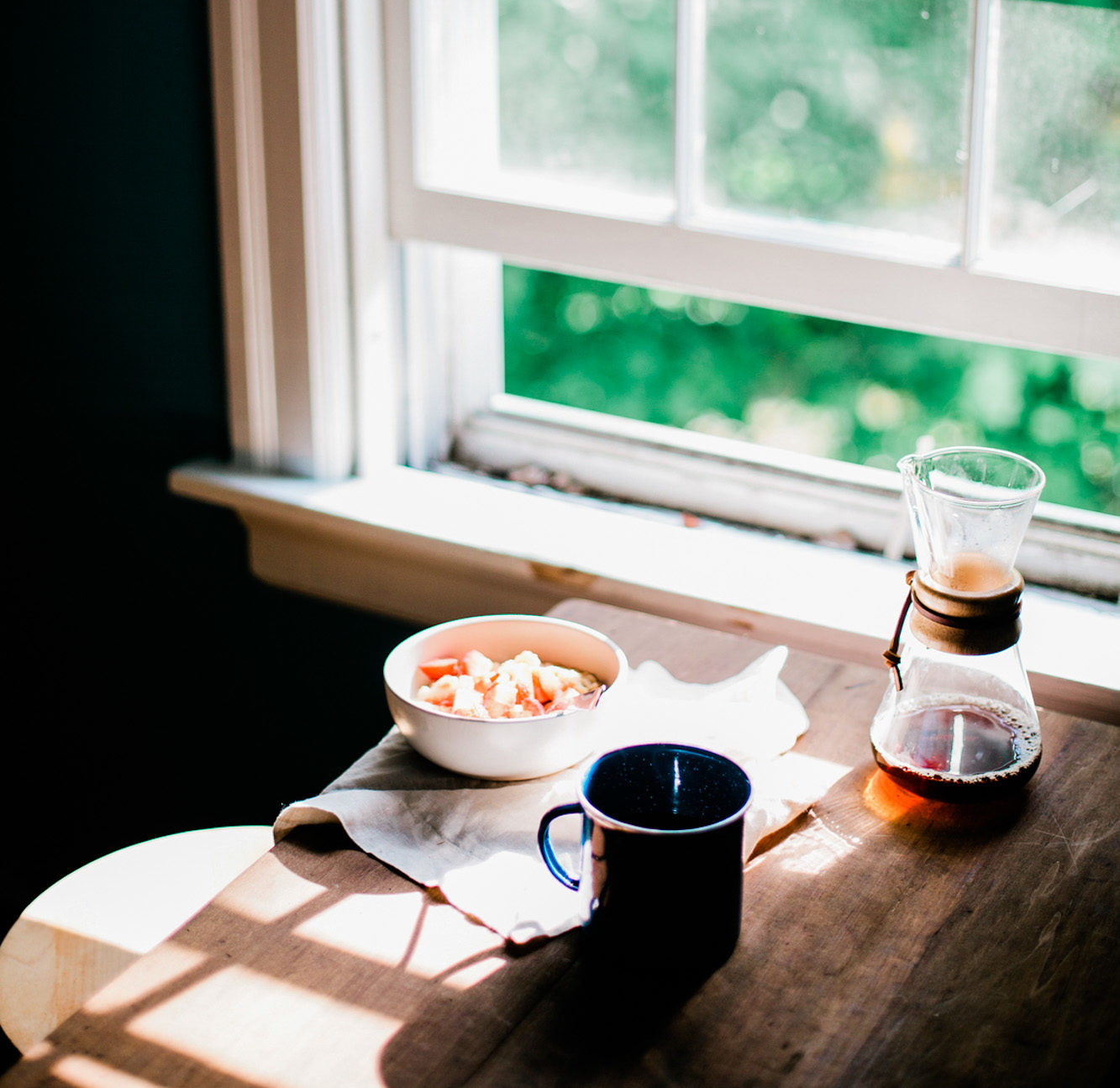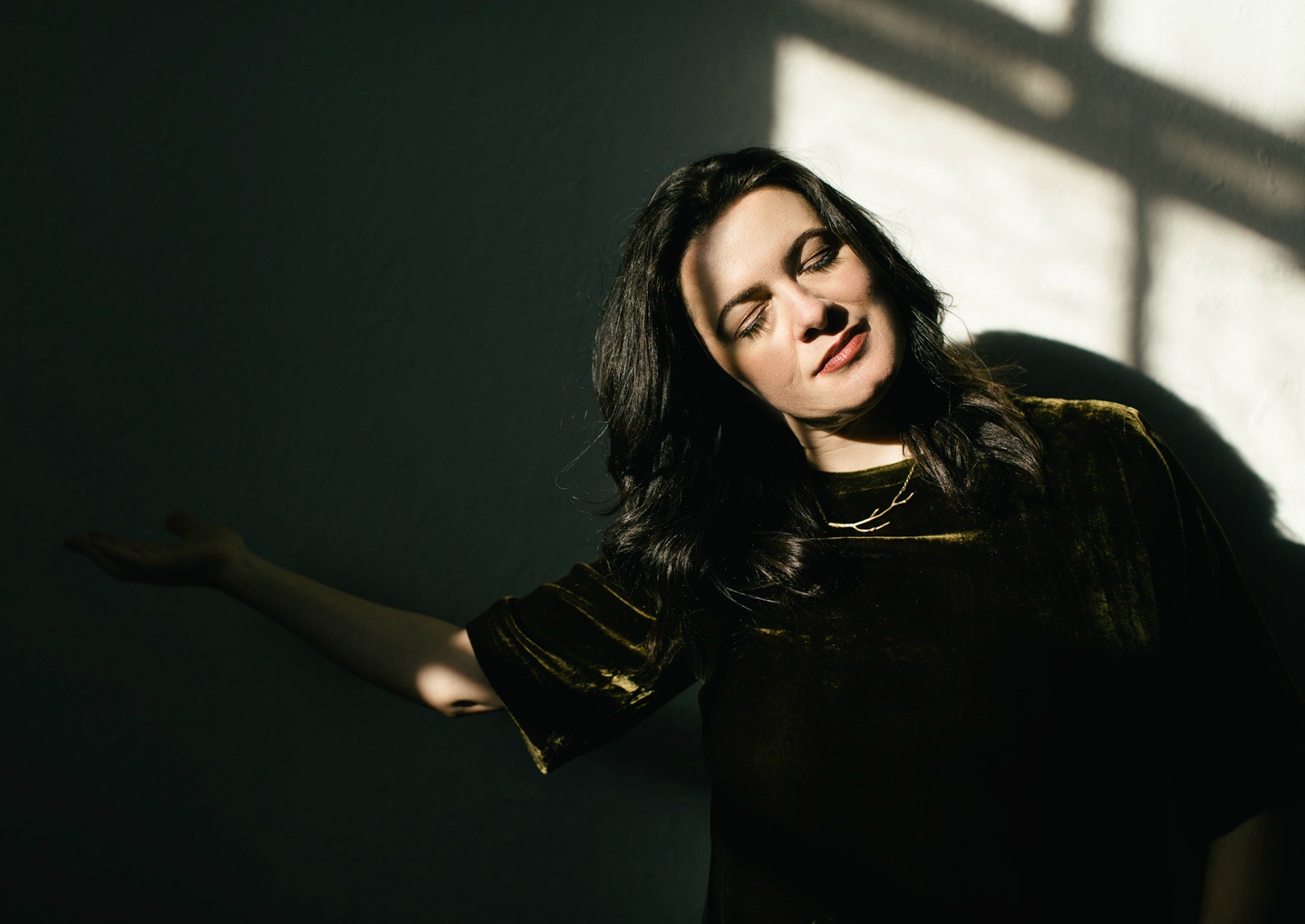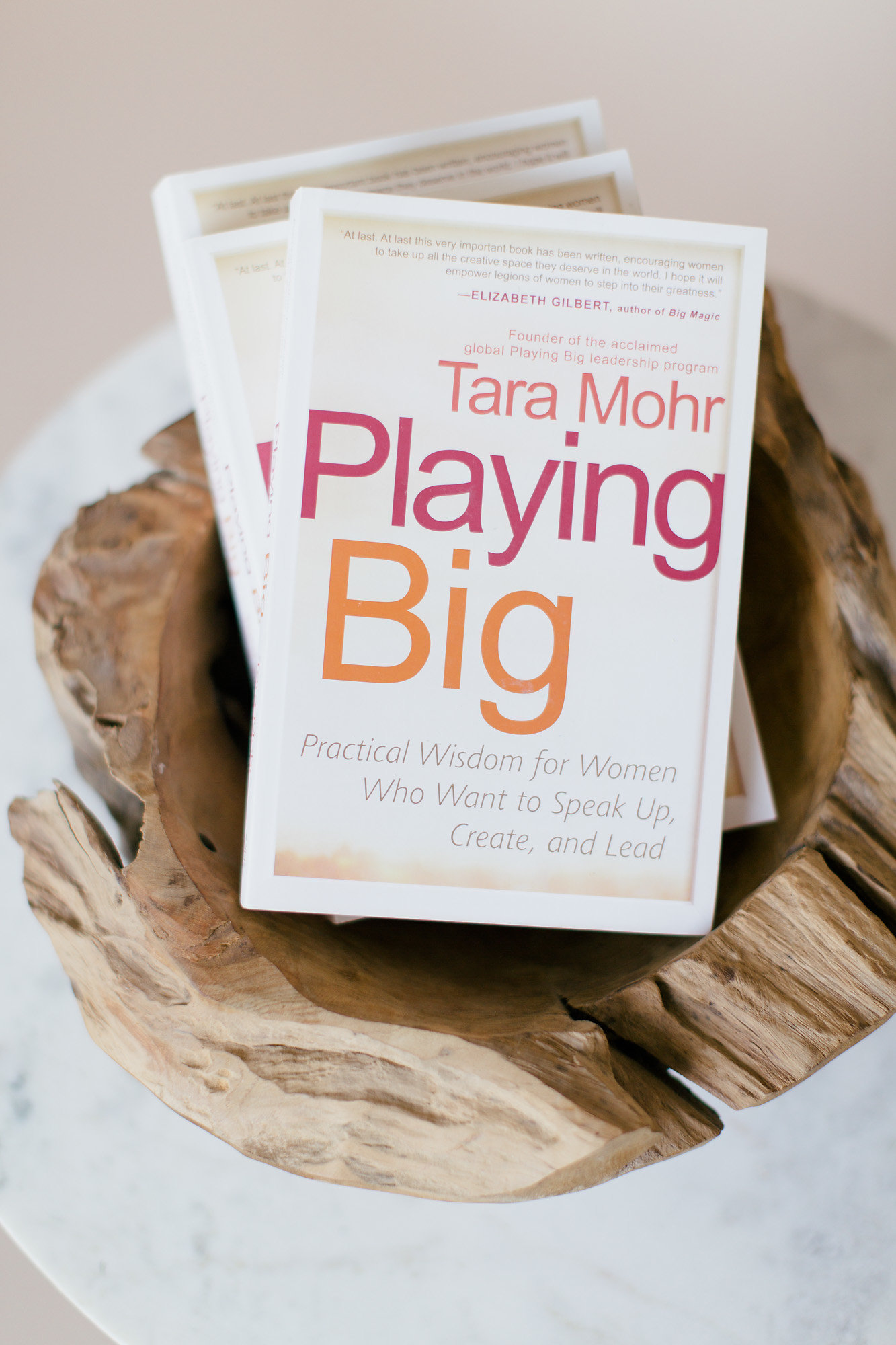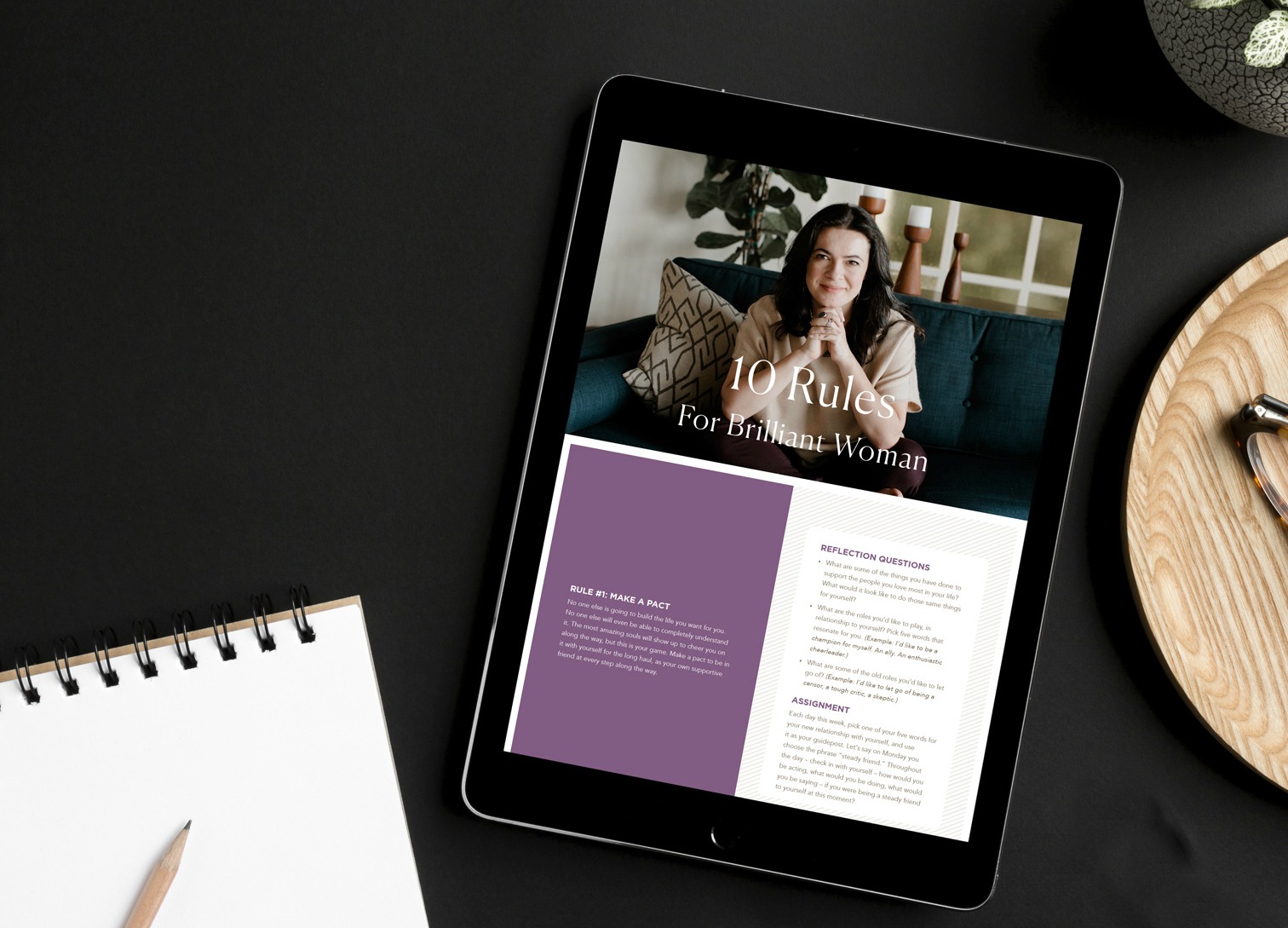I had an unusual childhood. I was seven years old before I learned that not all children analyzed their dreams each morning at the breakfast table with mom and dad, diagramming the archetypes on a yellow pad, next to the bowl of oatmeal. When I came home with a typical childhood complaint like “Johnny teased me at recess,” I was usually met with, “What do you think is going on at home for Johnny that would cause him to tease other kids?”
My parents weren’t psychotherapists, religious fanatics, or even hippies. They were regular people who believed that understanding oneself and others was an essential part of living a happy life. From an early age, I was encouraged to learn about psychology and spirituality and apply tools from both arenas to my daily life. Our house was full of books on those subjects and I grew up reading them.
I have never tired of asking the question: how can our inner lives shift our outer lives? Emotional awareness, creativity, spiritual practice: these are the enduring center of my daily life.

A Hybrid Path
Even as I grew up learning about spirituality and psychology from my parents at home, I was also trying to navigate a very different world: school.
One world – the world I grew up in – valued intuition and inner wisdom; the other held data and logic as our primary tools for knowing.
One maintained that each human being was an expression of the divine with equally precious gifts; the other put kids in competitive rankings against each other.
From my mother I learned that our inner lives determine what we do in our outer lives. At school no one talked about how the belief systems or childhood messages internalized by our world leaders led to the wars we were studying.
I’ve spent much of my life learning to navigate both of these worlds – and worldviews, simultaneously – to fill my mind with education but not let information eclipse wisdom. To use the mind, but not allow it to trample the heart.
My approach to women’s leadership and wellbeing braids them together: inner and outer work, mind and heart, learned knowledge and intuitive wisdom.
Where Are The Women?
Where are the women? I started asking that question early on.
Why was a woman never mentioned in my history classes in grade school?
Why were there no women up in front of the congregation when we sang and prayed?
Why were there no women in the photographs on the front page of the newspaper?
When I was fifteen years old, my high school English teacher explained that our class would read a variety of books centered around the theme “Coming of Age”– Black Boy, A Separate Peace, Lord of the Flies, and others.
I looked at the list and saw that all the books were about boys coming of age. All were written by men. I knew very well – from my own experience of being a fifteen year old – that the story of girls coming of age was very different from that of boys.
I felt so called to do something about it that I worked to get my school’s curriculum changed, and did. A few years later, and that curriculum was altered, with literature by and about women a part of it.
That was my foundational experience following the calling that continues to be at the heart of my work: to help restore women’s voices where they are missing, wherever I can.

Soul Recovery
Coming into the working world as a young woman, I had worked hard and done well in school. So why didn’t I feel confident? Why was I grappling with such intense feelings of fear?
What had happened to my creativity? I grew up a child who loved writing, dance, performing, and creative projects of all kinds, but now I found myself scared of the mere idea of creating anything – and petrified of putting something into the world.
Slowly, I started a process of unearthing my old dreams, befriending neglected parts of myself (the writer, the creative, the spiritual seeker), and, small step by small step, changing my life to make it a more authentic reflection on me.
A part of that process was slowly coming to admit, and accept, that I wanted to do work in the realm of my lifelong passions – personal growth, psychology, spirituality. That led me to the work I do now, that I have been so grateful to do over the past decade.
It also meant a kind of creative recovery: starting to write again, no longer stopped by my inner critic. It meant mustering up my courage and returning to the dance studio. And it meant coming back to what I know to be the most vitalizing and essential gift I can give myself – spiritual practice.

Women Playing Bigger
When I first started working with women coaching clients many years ago, I was stunned by the phenomenon that I saw.
My clients were brilliant women – smart, hard-working, kind-hearted. They were the kind of people I wanted to see in charge–of our companies, our institutions, our government. They were, frankly, usually far more qualified to be in charge of their organizations than the people who were in leadership roles.
But, as I learned in my coaching office, they had somewhere gotten the message they weren’t leaders. They grappled with self doubt. They were alienated by or burnt out on organizations that subtly or overtly devalued women’s voices and ways of working.
So I went to work. I became dedicated to discovering what truly made a transformative difference in allowing women to play bigger – not on the world’s terms, but on our own terms.
I remain obsessed with the question that has been at the heart of my work for a decade: what is the inner journey women must take to let go of the legacy of a patriarchal past, and now claim – and use – our power?
Working with women in honest coaching sessions, and supporting them through daily progress toward, or setbacks from their goals, I studied, observed, and learned.
I learned what was most helpful to women seeking to work and live without paralyzing self-doubt, women seeking to create lives they truly loved, women wanting to grow more free.
From what I learned, and of course from my own journey, I developed the Playing Big model, a set of ideas, practices and tools for women who want to play bigger on their own terms.

Rewoven by motherhood
I’m a mom of three young children, living in San Francisco with my beloved of the past two decades. I do the juggling act that so many women do – blending roles and wearing many hats (and a little spit-up) through the day. Motherhood has rewoven who I am, taught me the endurance and intelligence of these fleshy forms we are, and calls me again and again to turn myself into love.
Bio
Tara Mohr is an expert on women’s leadership and well-being. She is the author of Playing Big: Practical Wisdom for Women Who Want to Speak Up, Create, and Lead (PenguinRandomHouse), named a best book of the year by Apple’s iBooks. Tara is the creator and teacher of the global Playing Big leadership program for women, and of the Playing Big Facilitators Training for coaches, therapists, managers, and mentors. She is a Co-Active Training Institute certified coach with an MBA from Stanford University and an undergraduate degree in English literature from Yale. Her work has been featured on national media from the New York Times to Today Show to Harvard Business Review. She lives in San Francisco with her husband and three children.

Get Tara’s free 10 Rules for Brilliant Women Workbook
+ weekly articles, inspiration & information about upcoming programs.
Get Tara’s free 10 Rules for Brilliant Women Workbook
+ weekly articles, inspiration & information about upcoming programs.
